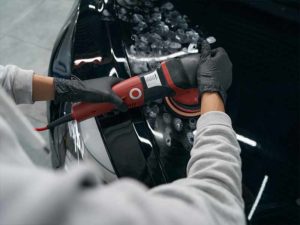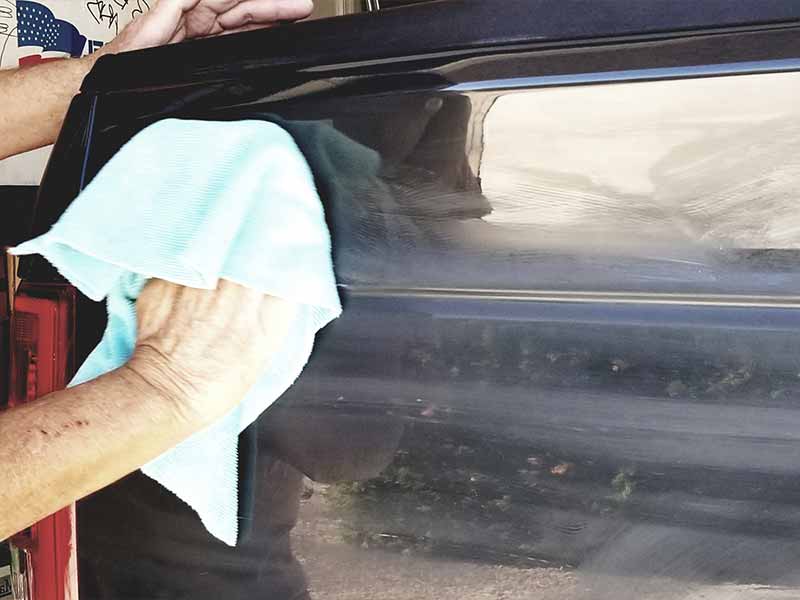Table of Contents
Rubbing compound and polishing compound are both compounds used in the paint correction process. They are designed to remove scratches and stubborn surface contaminants from a car’s paint. Rubbing compounds are more aggressive while polishing compounds are milder and used for lighter scratches and milder problems.
Rubbing Compound Vs Polishing Compound
Rubbing compound is a more aggressive compound with a coarser grit. It is used to tackle more difficult scratches, oxidation, stains, and surface contaminations. Polishing compound is a much milder compound that is used to remove finer swirls, scratches, stains, and surface contaminations.
Rubbing compounds will leave more more dull finish than a polishing compound and will need to be followed up with a polishing compound. If you only use a polishing compound you won’t need to follow with another method to restore the surface shine, aside from a final wax coating or other paint protection product.
Neither will remove deep scratches and are only designed to remove surface contaminants and scratches in the clear coat. While rubbing compounds and polishing compounds may be used as part of the process to remove deep scratches, any scratch that penetrates all the way through the clear coat will require a more involved approach to fix.
How do you know when to use rubbing compounds. How do you know when polishing compounds are the safer choice.
Keep reading to find out everything you need to know about rubbing compound vs polishing compound.
What is polishing compound?
Polishing compound is a mildly abrasive polishing agent that is suspended in a thick liquid. It’s used for polishing out swirls and fine clear coat scratches as well as some light oxidation and surface stains and contaminants.
You can think of polishing compound as a very fine grit sandpaper. The benefit of polishing compounds over a fine grit sandpaper is that the liquids and additives in the compound help lubricate the pad and grit as it works across the surface of your car’s paint.
Wet sanding can approximate the benefits of a liquid polishing compound but ultimately isn’t as easy to use and still suffers some from the sandpaper grit clogging.
When should you use polishing compound
Polishing compound is ideal for removing light scratches and minimal cleaning work on your car’s paint. Polishing compound will make it easier to not remove too much clear coat. Polishing compound is mildly abrasive and much safer to use on your paint surface without worry of burning through the clear coat.
Use for removing light clear coat scratches
Fine scratches and swirls in the clear coat layer of your car’s paint build up over time from regular washes and other incidental light contact. These scratches aren’t very damaging but over time they dull the finish.
Polishing compounds will remove an extremely thin layer from the top of the clear coat, essentially removing the very light scratches. This process will leave the surface of your car’s paint looking like new.

Use for removing light paint oxidation
Oxidation happens when the ultraviolet rays from the sun break down the surface of your clear coat and leave a chalky-looking white haze on the finish of your vehicle. Like with fine scratches, light oxidation can be removed with polish to expose undamaged clear coat beneath the damaged surface.
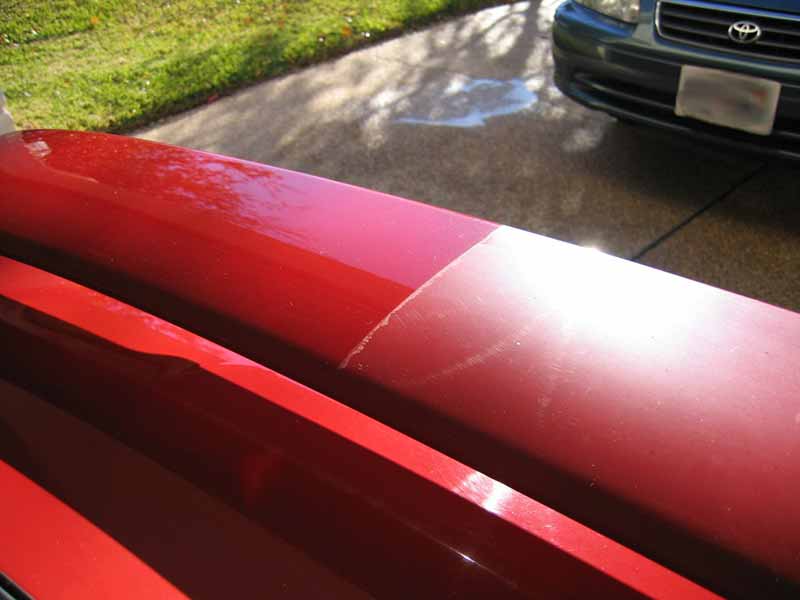
Use for removing hard water spots
Hard water is simply water that contains a lot of minerals. This can be the case with tap water or well water. If your car isn’t properly dried before the hard water droplets evaporate, the minerals in the water will be left behind and leave spots on your car’s paint.
This mineral deposits are often extremely difficult to remove. There are water spot removing products on the market, but it more difficult circumstances, polishing compound is used to remove the bonded minerals left by the water spots on the surface of your vehicle’s paint.
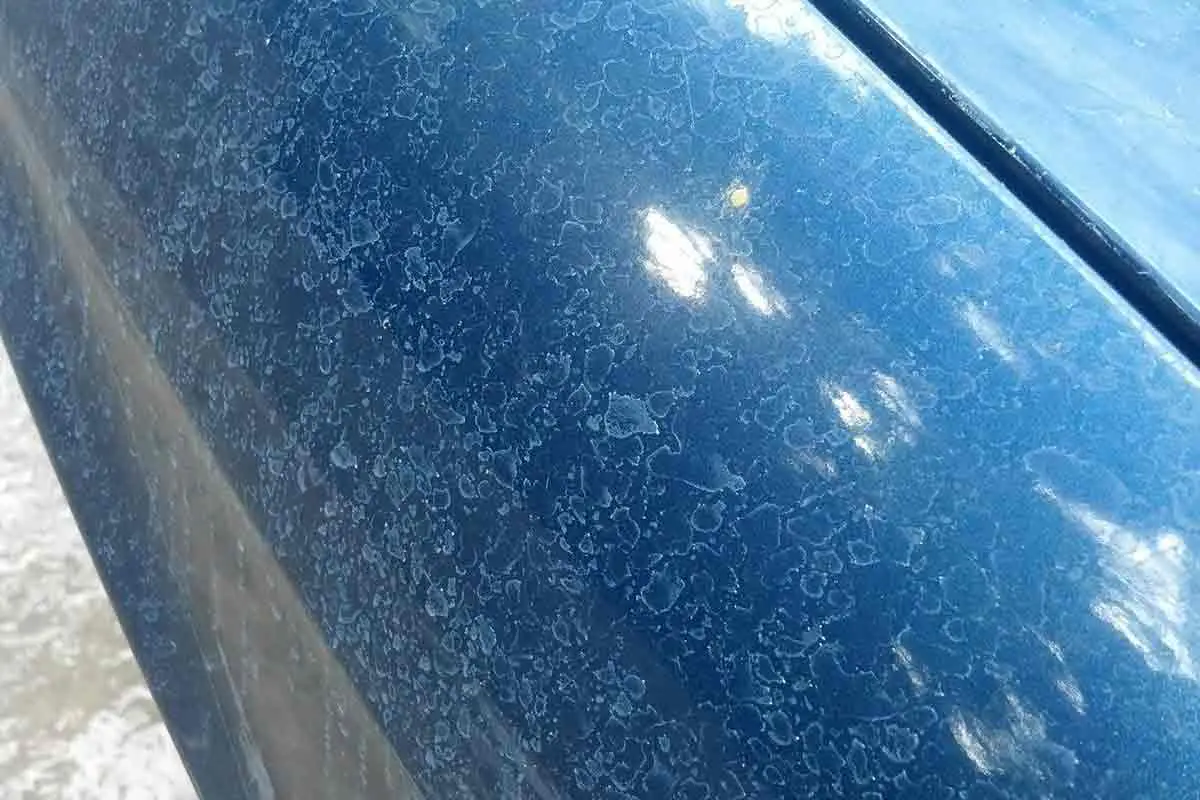
Why should you not use polishing compound
While polishing your car or truck’s finish can restore old paintwork to a showroom new shine, it does so by removing a thin layer from the top of the clear coat. Every time you polish away some of the clear coat you’re obviously making this protective layer thinner. Polishing too often can remove all of the clear coat and expose the paint layers beneath. This is a much more difficult problem to solve than most of the problems a polishing compound is designed to remedy.
How to use polishing compound
Polishing compound can be done by hand or with a polishing machine known as a dual action polisher.
Polishing by hand isn’t practical for large areas, although it can be more manageable for tight spots and small problems. It requires quite a bit of elbow grease to get the job done well.
Dual action polishers not only make polishing large areas much easier, the dual action of the polishing head helps reduce the opportunity to cause swirls and holograms in the finish. Another benefit of a good dual action polisher is that when too much pressure is applied, the polishing head will stop spinning, preventing you from burning through the clear coat too quickly.
Many are afraid of using a dual action polisher on their car’s paint, and that’s understandable. The truth is that not only will you have a much easier time working with a polishing machine to do the hard work, but you’ll get better results and find that dual action polishers are quite safe on your vehicle’s finish when used with the proper technique.
Here is a high-level overview of the steps involved with using polishing compound:
- Prep by thoroughly washing and drying your car or truck
- Inspect the area and decide if polishing compound is necessary or if another method will be sufficient
- Apply some polishing compound to your polishing pad
- Dab the pad on the area you’ll be working to spread the compound around the area and into the pad
- Polish with the polishing compound until you’re satisfied, being sure only to remove as much clear coat as necessary to achieve the desired result
- Wipe away excess polishing compound with a microfiber cloth and reinspect the area
- Repeat if necessary

DA Polisher Considerations
Using a dual action polisher is a good idea. It makes the job much easier and a quality dual action polisher is actually quite safe to use. That said, here are some tips to keep in mind to ensure you’re being as safe as possible when using your dual action polisher for the first time.- Choose the right applicator pad
- Start with slower rotation speeds and work your way up as needed
- Watch your speed across the paint’s surface
- Avoid excessive pressure on the area you’re polishing
- Avoid tilting the polishing pad and try to keep it parallel with the paint surface
- Pay attention to how soft the paint is and how it is reacting
Pros of polishing compounds
- Reasonably safe method of removing light scratches and stubborn surface contaminants
- A single application can dramatically improve the surface of your car’s paint
- Can restore the showroom shine your vehicle’s paint once had
Cons of polishing compounds
- Care must always be used to avoid wearing away too much clear coat
- May not be aggressive enough to solve all clear coat surface issues

What is rubbing compound?
Rubbing compounds are very similar to polishing compounds. The main difference is they have a more coarse abrasive grit suspended in a liquid. Rubbing compounds also sometimes come in the form of a paste as well. They are used for polishing out deeper clear coat scratches and removing stubborn or embedded paint contamination.
Rubbing compounds should only be used for these more difficult to remove problems to avoid removing too much clear coat unnecessarily.
Paste Vs Liquid Rubbing Compound
Rubbing compounds are available in either a liquid or paste form. Liquid rubbing compounds are milder while pastes are more aggressive. Liquid rubbing compounds are still more aggressive than liquid polishing compounds.
When should you use rubbing compound
Rubbing compounds are used for more difficult clear coat blemishes. The following are some of the most common reasons to use a rubbing compound instead of a polishing compound:
Use for removing moderate clear coat scratches
Moderate clear coat scratches are more easily removed by more a more aggressive rubbing compound. The coarser grit is able to cut down the clear coat much more quickly than a polishing compound but will not be quite as shiny when finished as a polishing compound would leave it.
Use for removing heavy paint oxidation
Sun damage from ultraviolet radiation will cause the clear coat on your vehicle’s paint to break down and oxidize, leaving a white haze. For particularly heavy oxidation, a rubbing compound is more appropriate for cutting through the larger amount of oxidation.
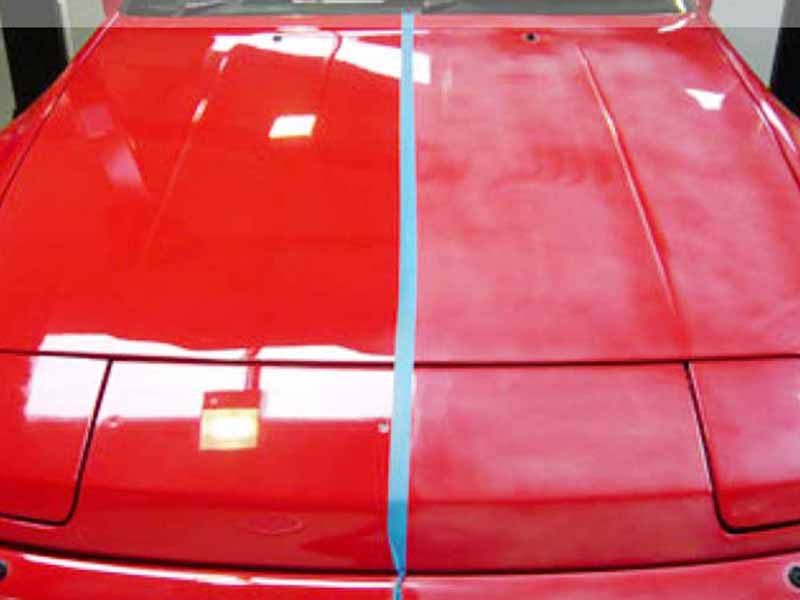
Use for removing paint transfer
Paint transfer on bumpers and doors often caused by bumping into other vehicles, painted parking bollards, and similar objects not only scuffs the finish but leaves paint from the other object embedded in the surface of the paint.
Paint transfer is usually quite deep and requires a more aggressive rubbing compound to more easily and completely remove the transfer and smooth the scuff.
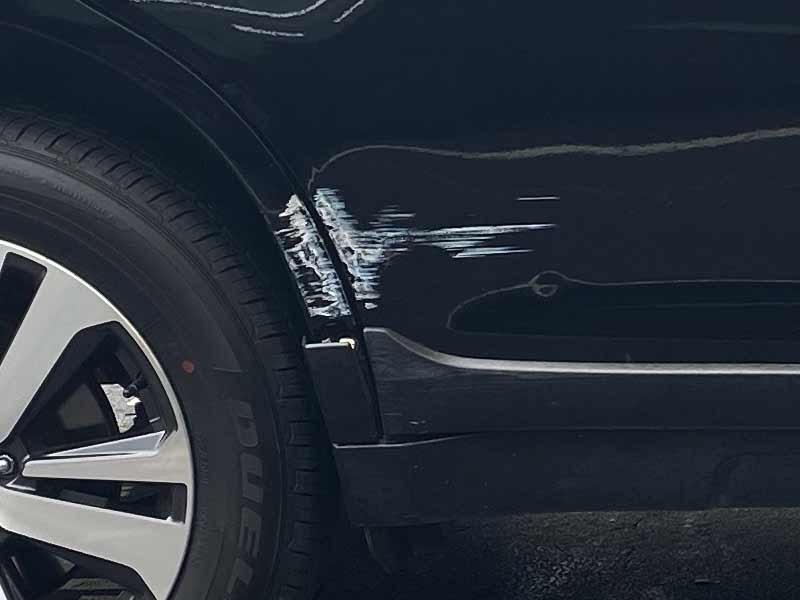
Use for smoothing deep scratches
Deep scratches often need smoothing to help remove sharp and rough edges and prepare them for touching up. Deep scratches are those that penetrate all the way through the clear coat and at least down into the paint layers. Deep scratches can also penetrate all the way down to bare metal. Smoothing these deeper scratches is necessary for properly touching up the damage and blending the touch up paint into the existing paint.Why should you not use rubbing compound
Rubbing compound is great for quickly cutting through more difficult surface problems and paint scratches. It shouldn’t be used on milder problems that don’t require this aggressive of an abrasive material. Basic car polish can solve many problems and will be far less likely to burn through the clear coat and down into the color layers. Once the clear coat has been burned through you’ll have a bigger problem to deal with.How to use rubbing compound
Like polishing compound, you can use rubbing compound by hand in tight spots and small areas, but it is best used with a quality dual action polisher.- Prep by thoroughly washing and drying your car or truck
- Inspect the area and decide if rubbing compound is necessary or if polishing compound will be sufficient
- Apply some rubbing compound to your polishing pad
- Dab the pad on the area you’ll be working to spread the compound around the area and into the pad
- Polish with the rubbing compound until you’re satisfied, being sure only to remove as much clear coat as necessary to achieve the desired result
- Wipe away excess rubbing compound with a microfiber cloth and reinspect the area
- Repeat if necessary
- When satisfied, apply polishing compound to a fresh polishing pad and polish to restore the shine
- Wipe away excess polishing compound with a microfiber cloth and reinspect the area
- Repeat if necessary
Pros of rubbing compounds
- Reasonably safe product for addressing more severe clear coat contamination
Cons of rubbing compounds
- More care will need to be taken to ensure too much clear coat is not removed
- Requires following with polishing compound to restore shine
- Can’t remove deep scratches

Helpful Links
Conclusion: Rubbing Compound Vs Polishing Compound
Rubbing and polishing compounds can make a dramatic difference in the look and shine of your car’s paint. The difference between rubbing and polishing compounds is that rubbing compounds are more aggressive and designed to remove deeper scratches and more severe surface contamination more quickly.
Rubbing compound will also always need to be followed with the finer grit polishing compound to restore the gloss and shine of your clear coat.
A dual action polisher will make a nearly impossible job a breeze although care should be taken to ensure you keep the polishing pad level with the paintwork and not use too much pressure.
These compounds can make a dramatic difference in the look of your car or truck, especially older vehicles with more severe problems.
Even new car owners can benefit from occasional polishing to address specific car paint problem areas that arise.
If you don’t know whether to use rubbing compound vs polishing compound, always start with polishing compound and step up to rubbing compound if it’s taking too long to effectively remove the surface problems you’re trying to solve.


